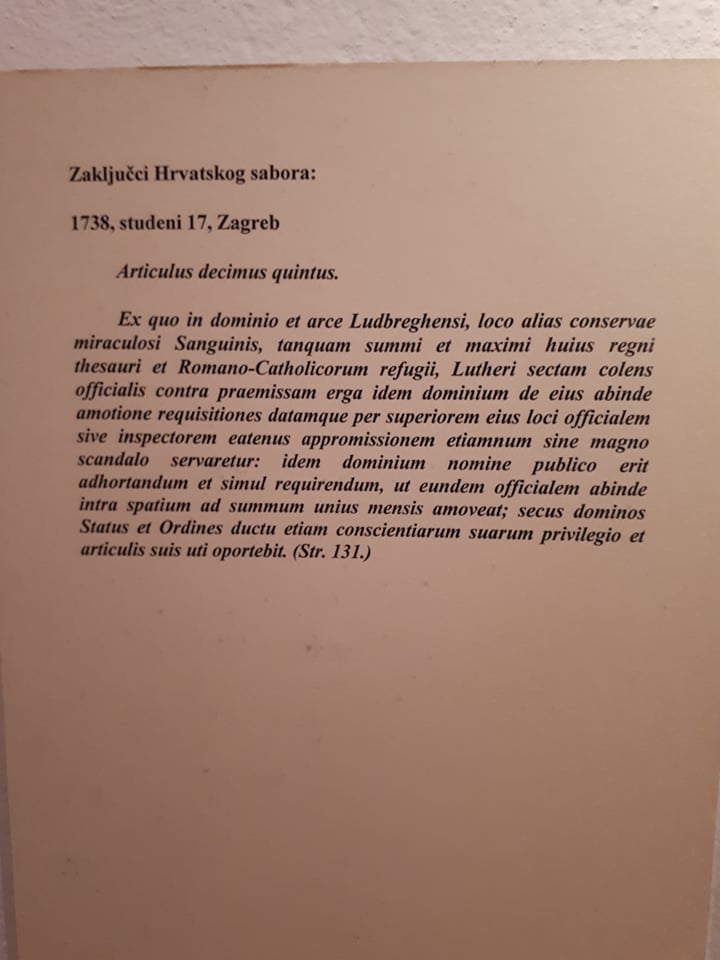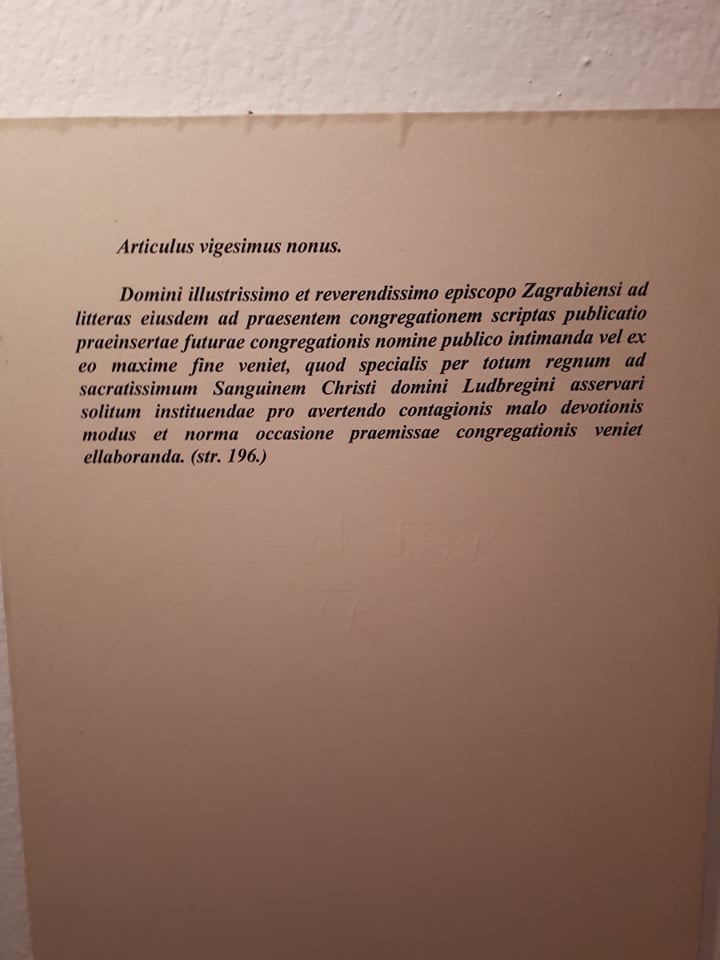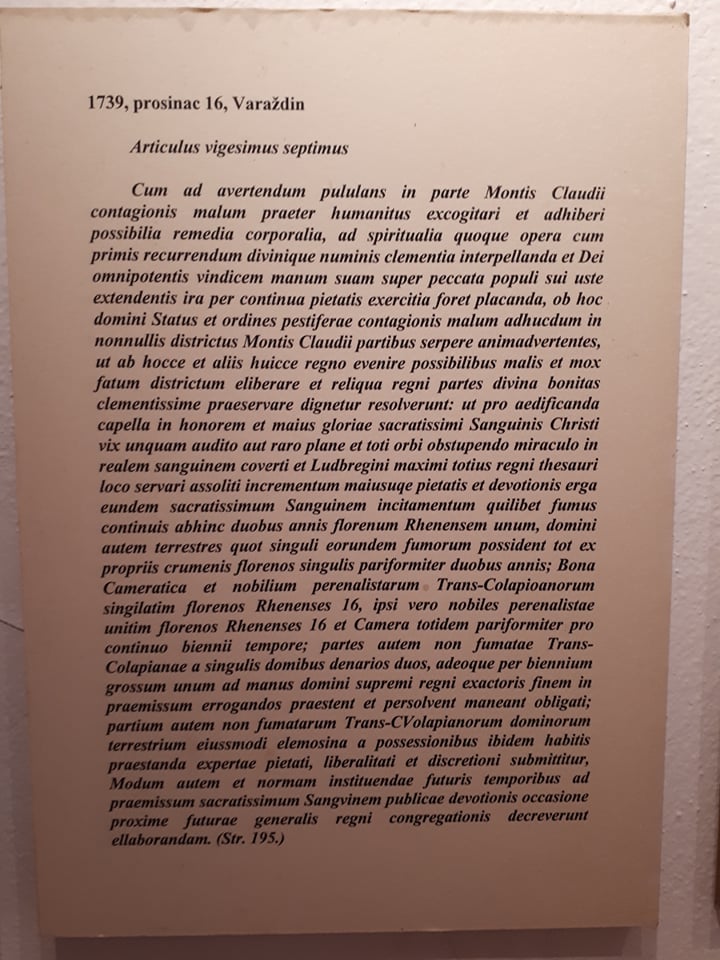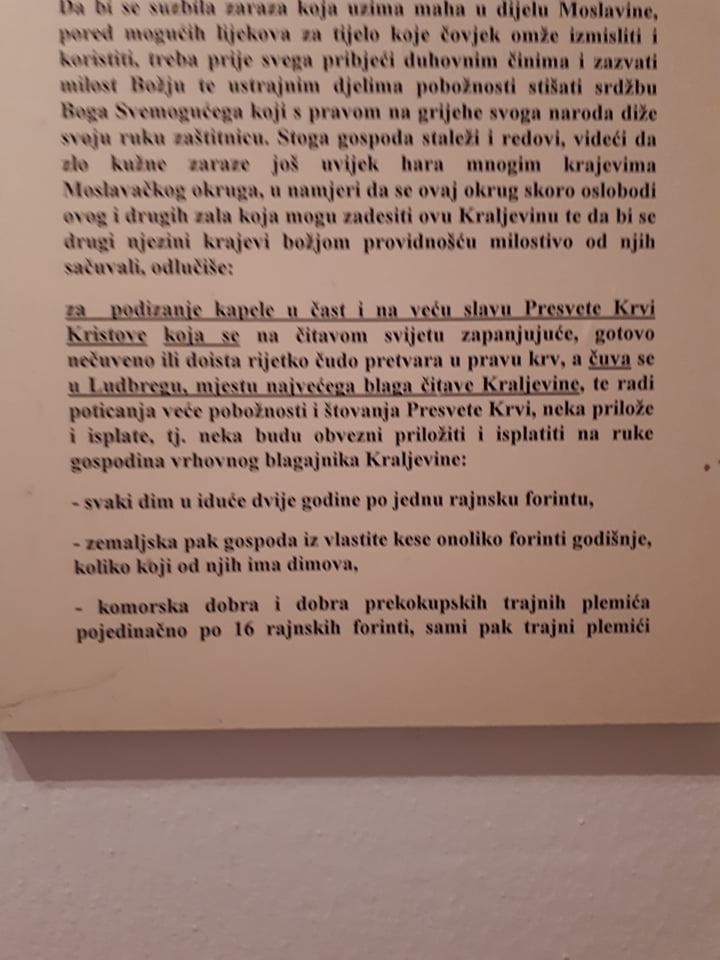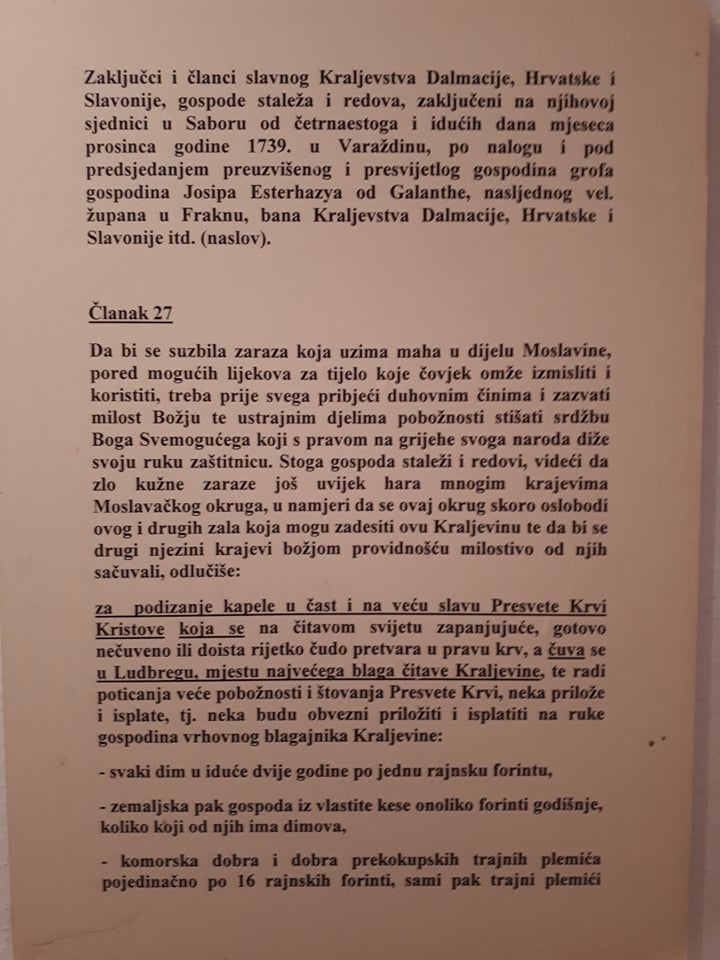March 27, 2020 - COVID-19 is not the first unwelcome infectious enemy to come to Croatia, and Vili Beros was not available in yesteryear, so how did the Croatian Parliament battle the 1739 plague? With a promise which was fulfilled just 26 years ago, in 1994.
One of the most interesting stories I have come across in continental Croatia is from the town of Lubreg, about one hour north of Zagreb close to the Hungarian border.
Ludbreg is known in Croatia mostly for its claim to be the centre of the world, but as I discovered on my first visit a few years ago, it actually has another more intriguing claim to fame - it is home to the only certified miracle in Catholic, complete with Papal Bull which you can see in the small museum behind the lovely chapel where the Eucharistic Miracle of Ludbreg took place in 1411.
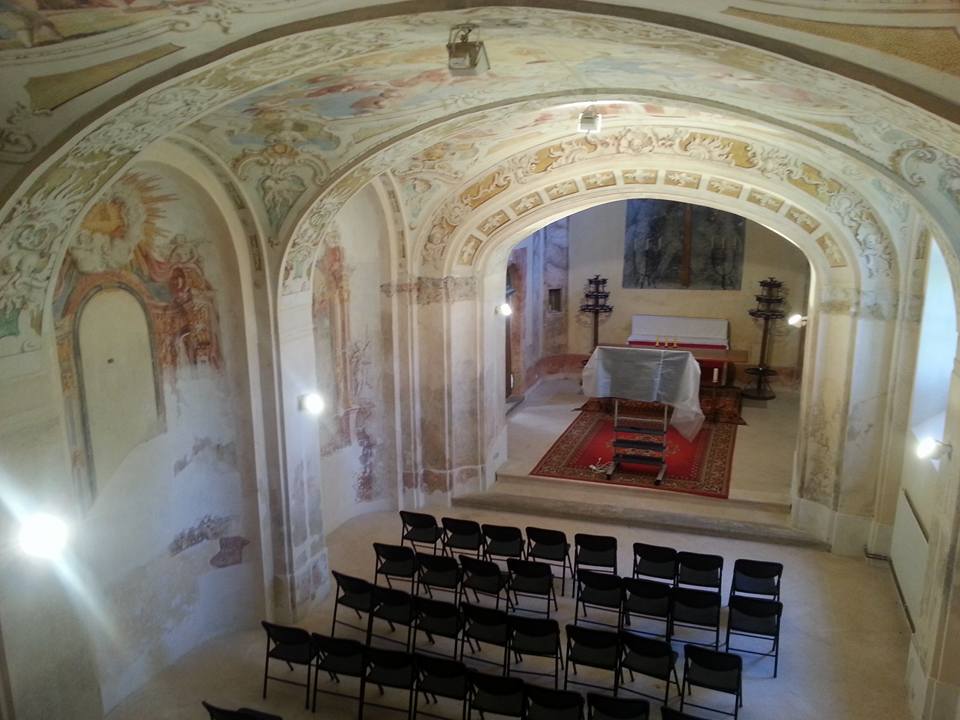
I have written about the miracle before in detail, so no need to repeat here (you will find more on this link, and on the video below, which is in Croatian only),
But the miracle is only part of the story, and it featured again during the 1739 plague which came to Croatia, extending as far as Brac. As I wasn't here at the time, I checked with Wikipedia on the 1739 plague:
The Great Plague of 1738 was an outbreak of the bubonic plague between 1738–1740 that affected areas in the modern nations of Romania, Hungary, Ukraine, Serbia, Croatia, and Austria. Although no exact figure is available, the epidemic likely killed over 50,000 people.
In February 1738 the plague hit the Banat region, having been spread there by the Imperial Army.
According to the 1740 Hungarian Diet, the Great Plague claimed 36,000 lives.
Southeastern Transylvania may have been the hardest area hit. Over the following eight years, the plague killed a sixth of the population of Timişoara. Timişoara's Monument of the Holy Trinity in Piaţa Unirii is dedicated to the plague's victims. The plague would return to hit the city again in 1762–1763.
Other cities in the region were also stricken. Between October 1737 and April 1738, 111 deaths were reported in Zărneşti, and 70 in Codlea.[2] More than 10% of the population of Cluj-Napoca was reported to have been killed by the pandemic.
The disease's spread extended to the Adriatic. It made its way to the island of Brač in modern-day Croatia.
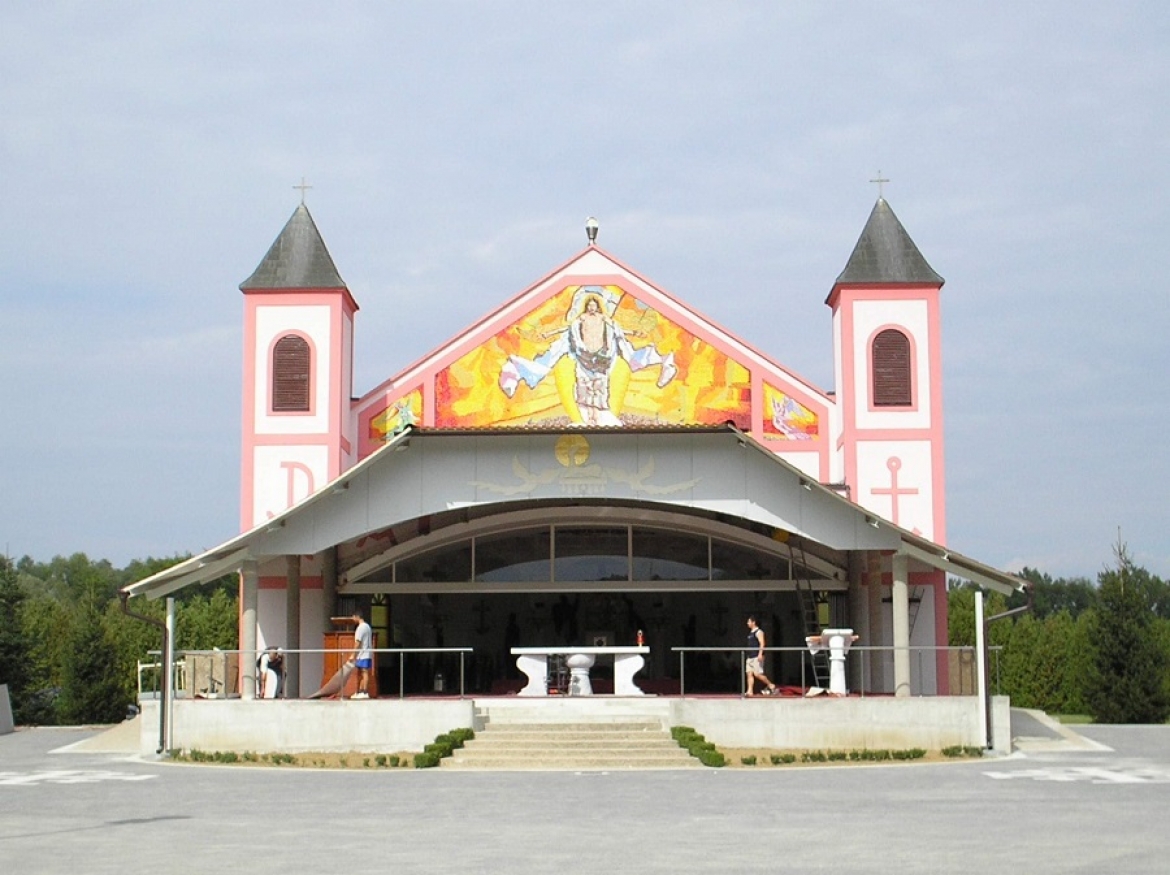
One of the actions undertaken by the Croatian Parliament in the capital of the time, Varazdin, was an undertaking to build a church of thanks in the miracle town of Ludbreg if the plague was stopped, promise which was actually fulfilled only 26 years ago, in 1994, during the Homeland War: According to The Real Presence:
In the 18th century northern Croatia was ravaged by the plague. The people turned to God to call upon His help, and the Croatian Parliament did the same. During the session held on December 15, 1739 in the city of Varazdin, they vowed to build a chapel at Ludbreg in honor of the miracle if the plague ended. The plague was averted, but the promise vow was only fulfilled in 1994, when democracy was restored in Croatia. In 2005 in the votive chapel, the artist Marijan Jakubin painted a large fresco of the Last Supper in which Croatian saints and blesseds were drawn in place of the Apostles. St. John was replaced with Blessed Ivan Merz, who was included among the 18 most important Eucharistic saints in the Church’s history during the Synod of Bishops held in Rome in 2005. In the painting, Christ is holding in His hand a monstrance containing the relic of the Eucharistic miracle.
The church and surrounding park welcomes 100,000 pilgrims in the first week of September each year - see the video above.
And below, in Latin and Croatian, the official documents to fight the 1739 plague.
To follow the latest in the modern-day fight against coronavirus, follow the dedicated TCN section.
